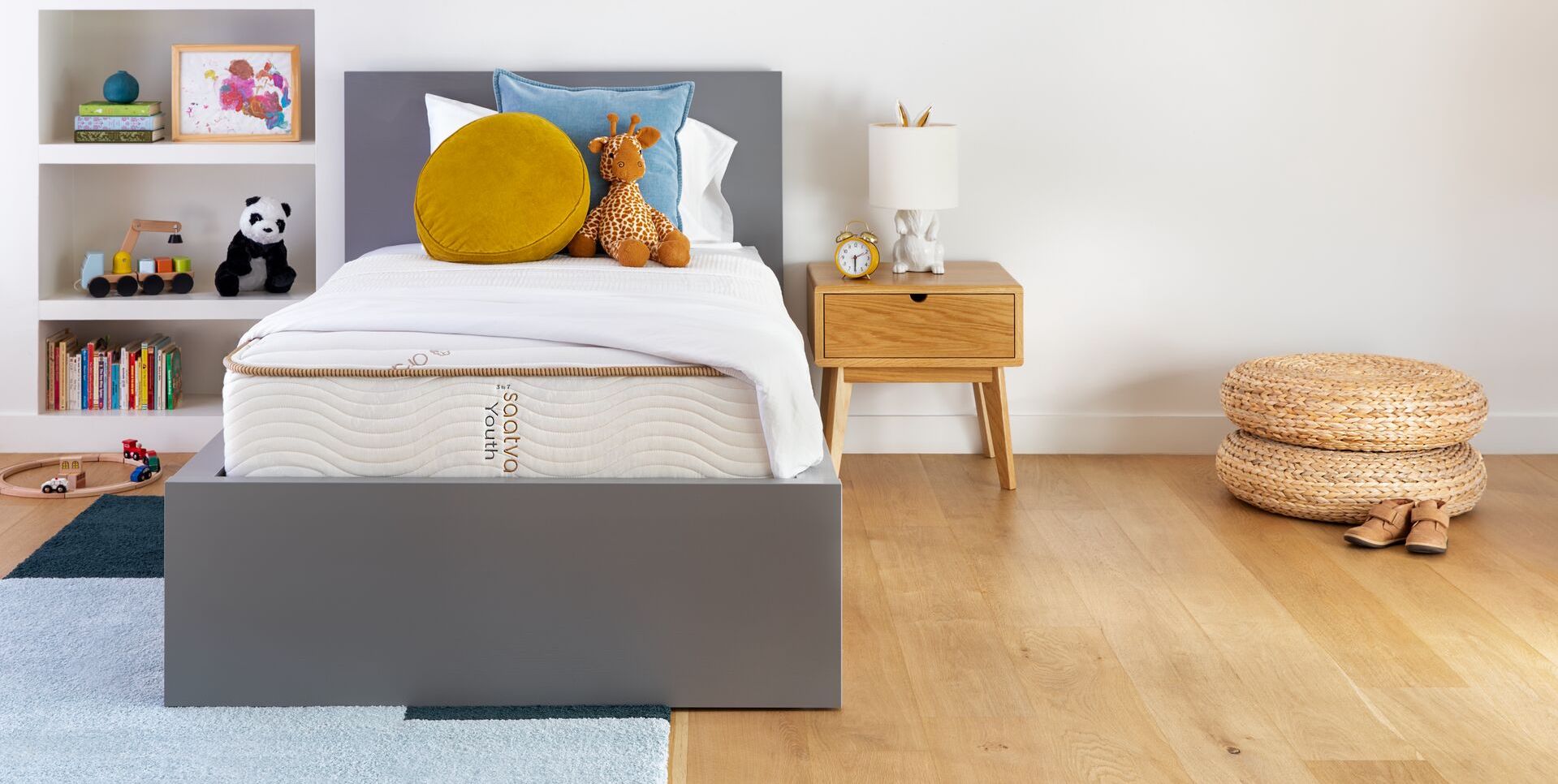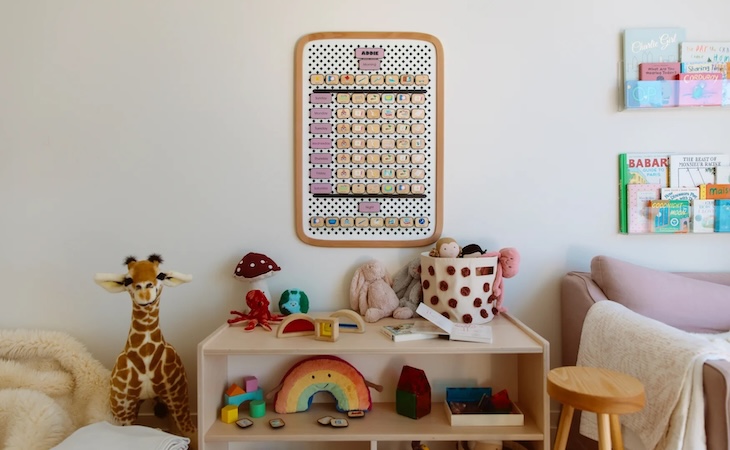Once you make it through the baby stage and the acute sleep deprivation of new parenthood, you might think your sleep troubles as a parent are behind you. But as children grow, different hurdles surrounding sleep present themselves.
Growth spurts contribute to wakeups, toddlers begin to climb out of their cribs, big kid beds replace cribs, and—eventually—a second child might join a nursery that was originally intended for one.
A recent CBS News poll found that 60% of people shared a bedroom with a sibling at some point in their life. Other data suggest that figure is higher: The New York Housing and Vacancy Survey says that in about two-thirds of homes with children under 18, kids share a room. In short: Many children room share.
But whether your children share out of necessity or choice, there are usually a lot of questions—especially as the years go on—that pop up along the way.
Experts tend to hear the same ones from parents time and time again—so we asked them to answer your most common questions, below.
Are there benefits to room sharing?
Absolutely. Sharing a room can help children bond, understand boundaries, and work through conflict—plus, it can free up space in your home. (If you have another space that could potentially be used as a bedroom, you could use it for an office instead, for example.) Kids also often enjoy sharing a room with a sibling, finding it fun.
Room sharing can also help kids feel more safe and secure when going to sleep. They can have a “sleep onset association” with having another person nearby, says Lynelle Schneeberg, PsyD, licensed clinical psychologist, assistant professor at Yale School of Medicine, and author of Become Your Child’s Sleep Coach. That means that simply knowing their sibling is sleeping nearby, in turn, helps them sleep.
When might I want to separate my kids if I’m able to? Does sex ever play a role in this?
In general, for opposite-sex siblings, most families separate their children into their own spaces in early elementary school around age 6 or 7, says Schneeberg.
“Children can enter puberty as early as the fourth or fifth grade—and most children, once they reach puberty, want to maintain their own space in separate rooms,” she explains. “They often like the privacy and they also often prefer to spend more time in their rooms on their own.”
Same-sex siblings often want to stay together much longer and really enjoy the togetherness, she says.
What are some circumstances where children may benefit from sleeping separately?
There are some times when, if you have the space, it could make sense to separate your children (even temporarily) for sleep.
If one sibling needs some sleep training, for example, and you’re in and out of the bedroom—or a child is crying during the night and could wake up another child—separating kids can help everyone get the rest they need, says Schneeberg.
In this case, you could consider having an older sibling sleep in your room or in a guest room until the younger child is sleeping more soundly at night. Or, you could have a younger child sleep in a crib in your room while an older child sleeps in their own room.
Also, if one of your children keeps the other one up too late or wakes the other too often, siblings may need their own spaces to avoid too much lost sleep, Schneeberg says. “Similarly, if one sibling comes to bed much later, he or she may wake the other one,” she adds. (Here’s how to help a sick child sleep better.)
What are some ways to ensure everyone sleeps well if I don’t have the means to have separate bedrooms?
First things first: Often, two (or more) children sleep perfectly fine in one room. Remember: Something isn’t a problem until it’s a problem.
If you start noticing sleep disruptions and don’t have another room for your kids? Schneeberg suggests setting up screens, curtains, or even tall bookshelves to separate a single room into two. “There are even ways to put up temporary walls for siblings and these can be removed when needed,” she says.
This can be particularly helpful for opposite-sex siblings to create privacy. You could also just simply set up the room with different sections, keeping personal items separate with no physical boundaries to help a child feel like a part of the space is their own.
Explaining boundaries around sleep—telling kids, for example, “once we’re in bed, we’re in bed for the night unless you need to go to the bathroom”—and keeping the bedroom mainly for sleep can help your children fall into a routine around sleep too. (Check out these loft bedroom designs for kids’ rooms.)
How do I handle bedtime with room sharing?
Bedtime with room sharing can be tricky. Generally, there are two ways to approach it. The first: Put your children to bed at the same time and get them used to going through their bedtime routine together and settling down to sleep at the same time.
The second: Put one of your children to bed a bit earlier. Once they’re asleep, bring your older one in, reminding them that once they go into the room, it’s time to be quiet in their bed.
Figuring out which technique works for you will take some trial and error and also knowing your kids. Have a child who just does better with an earlier bedtime and one that’s a night owl? You may benefit from different bedtimes. Notice everyone sleeps better when they fall asleep together? Maybe one set bedtime works for you.
Remember too, this can—and likely will—change as time goes on and your children’s stages and sleep needs change.
How do I go about moving my kids into their own rooms if we do have the space?
First, you’ll want to make sure the timing is right based on your children’s ages and preferences (if they have been requesting their own room and you have the space to make that happen, for example).
You’ll also want to talk about the decision and test it out. “Some families maintain separate rooms for the siblings but then have ‘sleepover’ nights now and then if the kids enjoy this,” says Schneeberg.
Also, remember that like any transition, switching rooms can be an adjustment. If your child is used to sleeping in the same room as their sibling and then is separated from them into their own room, they could—at first—have a hard time falling or staying asleep because the environment is new, says Schneeberg.
“This can be remedied with some sleep coaching,” she says. You might stay nearby for a few nights or weeks while encouraging your child to form a new sleep onset association (getting a portable nightlight and reading themselves to sleep, for example).
Ultimately, it’s important to remember that children all over the world sleep in all different ways and that every home has a different sleep setup. If you feel like your current setup isn’t working, patience is important—especially around sleep—and there are always plenty of creative ways to remedy the situation.
Sometimes, consulting with other parents, family members, or a sleep consultant can help you create a sleep space plan that works for your family.
Ready to upgrade your children’s shared bedroom? Check out our high-quality Our dual-sided nontoxic crib mattress for little ones





